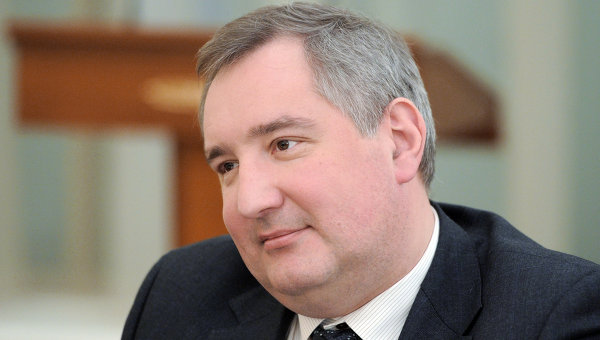
Russia’s Armed Forces Await Automated Command and Control—In 2015
Publication: Eurasia Daily Monitor Volume: 10 Issue: 51
By:

Moscow’s plans to modernize the conventional Armed Forces by 2020 hinge upon the successful design and adoption of automated command and control (C2), which has presented numerous challenges during testing. Moscow now plans to rush through its introduction; yet, none of the Ground Forces brigades will begin using the system until 2015 at the earliest. According to some indications, the automated C2 may be a second best choice, while its design and defense ministry plans to introduce it in military units are flawed (see EDM, December 4, 2012).
Having experienced several setbacks to the automated C2, or Unified System for Command and Control at the Tactical Level (Yedinaya Sistema Upravleniya v Takticheskom Zvene–YeSU TZ), by the end of 2013 the system’s first brigade set will arrive at the specialists’ training center, deployed since November 2012 at Western Military District’s 1st Command and Control Brigade in the Moscow Village of Kalininets. Later, all eleven branches of the Ground Forces Military Education-Scientific Center will receive this system costing around 10 billion rubles ($320 million). By 2015, the YeSU TZ will begin arriving in the combined-arms brigades in the Ground Forces (https://izvestia.ru/news/544954).
A spokesman for Sozvezdiye Concern, which is developing the system, said that officers and enlisted personnel currently do not understand how to use it. Consequently, “The training center in the Moscow Region will become the forge of cadres of state-of-the-art methods of the conduct of a ground engagement,” he explained (https://izvestia.ru/news/544954).
According to Izvestiya’s sources, Deputy Prime Minister Dmitry Rogozin played a crucial role in pushing through the introduction of the YeSU TZ. Nonetheless, the Military Industrial Commission under the Russian government earlier demanded the rejection of the system in favor of the Zarya-25 automated C2 system, which was developed by the Central Scientific Research Institute (TsNII) of Economics and Systems Management. However, a decisive factor was that the Zarya-25 remains in an early phase of readiness with testing scheduled to commence only by 2015. During the large-scale military exercise Kavkaz 2012, the testing of the YeSU TZ revealed more than 200 flaws—though 160 were attributed to human error, and others have allegedly been addressed. Now the emphasis will switch to training officers in order to prepare the introduction of the system (https://izvestia.ru/news/544954).
Aleksandr Khramchikhin, the deputy director of the Institute of Political and Military Analysis, doubts the system’s functionality, since it is designed only for one branch of troops. “This is fundamentally inadvisable. In order to create troops for network-centric warfare, we need complexes for the entire Armed Forces which are interoperable. Sozvezdiye, perhaps, is better than nothing but this is a rush job and not the realization of the concept,” he highlighted. Dmitry Kandaurov, an independent Moscow-based expert on automated C2 systems, agrees. Kandaurov asserts that its introduction should begin by equipping line units with the YeSU TZ and not the training centers so that future specialists may be later selected based upon their experience. “We have the command and control subsystems of the Missile Troops and Artillery, PVO [Air Defense] and so forth; there must be precise coordination between them. Otherwise, the presence of dissimilar subsystems will result in the increase of the combat command and control cycle and miscommunication between the units,” Kandaurov told Izvestiya (https://izvestia.ru/news/544954). Kandaurov argues that it would be simpler to create classrooms within the Ground Forces brigades, where two or three automated C2 systems may be simulated, while several trained specialists can augment a platoon of instructors.
The problem of uniformity is also important to highlight. As the Airborne Forces Commander Colonel-General Vladimir Shamanov has emphasized, the elite units will complete the process of adopting automated C2 systems by the end of 2013. However, the system for the Airborne Forces is different, designated as “Andromeda-D.” Though it has apparently performed well during tests in recent exercises, it may not be fully introduced into service until 2015 (Krasnaya Zvezda, February 14).
In 2012, Voyennaya Mysl carried a critically important article on automated C2. The authors, Colonel Vladimir Orlyanskiy, Colonel Pavel Dulnev and Lieutenant-Colonel Aleksei Kostenko, examined automated C2 systems as an integral component in the conduct of network-centric warfare. Orlyanskiy and Kostenko are senior academic staff members at the Center for Educational and Information Technologies at the “Combined-Arms Academy of the Russian Federation Armed Forces” Ground Forces Military Educational and Scientific Center. The article considered the central role played by such systems in the application of network-centric approaches to warfare, and grappled with the problems revolving around the efforts by the Russian Armed Forces to develop their own “single information space.” The authors pointed out that a number of state institutes and private companies are involved in the research and development of automated C2, but suggested they actually lack the necessary level of “coordinating their activities.” “Nobody is surprised anymore by a situation where dozens of automated command and control systems that are not compatible with one another may come together in military operations in the battlefield,” they noted (Voyennaya Mysl, no. 5, 2012).
However, referring to the Military Education and Science Centers created under the “[former Defense Minister Anatoly] Serdyukov reform,” the authors identified a much deeper problem resulting in the lack of development in appropriate mathematical models without progress in further progress in the military science. New hardware and software systems have not been introduced, the “mathematical equipment” is 30 or 40 years old, and its creators “can no longer improve it, for objective reasons, while new developers are in no hurry to appear.” This situation, in the authors’ view, has left the Armed Forces in an impossible position, with little prospect of resolving these fundamental issues. They conclude: “It is a well-known axiom that without the development of the material basis of the armed struggle it is impossible to improve the theory and practice of the art of war. Consequently, without the creation of, if not a universal, at least a sufficiently effective automated system of command and control of troops and weapons, any talk of the broader prospects for waging so-called network-centric warfare loses all point” (Voyennaya Mysl, no. 5, 2012).
Rogozin’s efforts to push the introduction of the new C2 system seem premature, ignoring reservations among senior officers and experts. One thing is clear: as the YeSU TZ appears in the brigades, it will not prove to be the panacea longed for by the defense ministry’s leadership.




